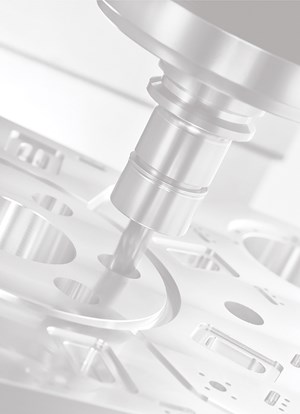Nikon CT Technology Provides High-Resolution Scanning
Limited Angle CT provides detailed inspection of specific areas of interest within larger components.
Share



Nikon Corp.’s Limited Angle CT scanning technology for its range of VOXLS and XT H 225 industrial X-ray inspection systems provide high-resolution imaging without the need for a full 360-degree sample rotation. By enabling samples to be positioned closer to the X-ray source, Limited Angle CT enables higher magnification, providing detailed inspection of specific areas of interest within larger components.
Designed to meet the demands of high-end industry, this advancement is particularly well suited for inspecting planar or geometrically complex components, such as printed circuit boards, pouch and prismatic EV battery cells and carbon fiber parts.
Key features include:
- High resolution: Achieves smaller voxel resolution for samples with high aspect ratios or complex geometries, where traditional geometric magnification would be limited.
- Optimized reconstruction: Nikon’s algorithm delivers datasets without quality or accuracy loss, despite reduced rotation angles, matching conventional CT performance.
- Automated operation: Nikon’s center of rotation calculation enables fully automated scans without manual intervention or positioning aids.
- Rapid acquisition: Completes detailed scans in minutes, significantly faster than traditional X-ray microscopy methods for comparable applications.
“Limited Angle CT represents an expansion of the inspection capabilities of our X-ray CT systems,” says Ben Morgan, Nikon’s X-ray product manager.
“It is one of several advanced imaging techniques available within Nikon's CT toolbox. Limited Angle CT works complementary to other methods such as X.Tend (Helical CT), Panel Shift CT, Tilted CT and Scatter Correction CT. This versatility within a system allows operators to select the most suitable technique for each specific inspection task. With Limited Angle CT, high-magnification inspection of specific regions within larger samples is now possible.”
Related Content
-
Using Digital Tap Testing to Measure Machining Dynamics
Tool-toolholder-spindle-machine combinations each have a unique vibration response. We can measure the response by tap testing, but we can also model it.
-
Orthopedic Event Discusses Manufacturing Strategies
At the seminar, representatives from multiple companies discussed strategies for making orthopedic devices accurately and efficiently.
-
Machined Part Geometry Measurement
Uncertain about uncertainty? Having trouble remembering the difference between accuracy and precision? Read on to review key metrology terms relevant to the ISO Guide to the Expression of Uncertainty in Measurement (ISO GUM).



















